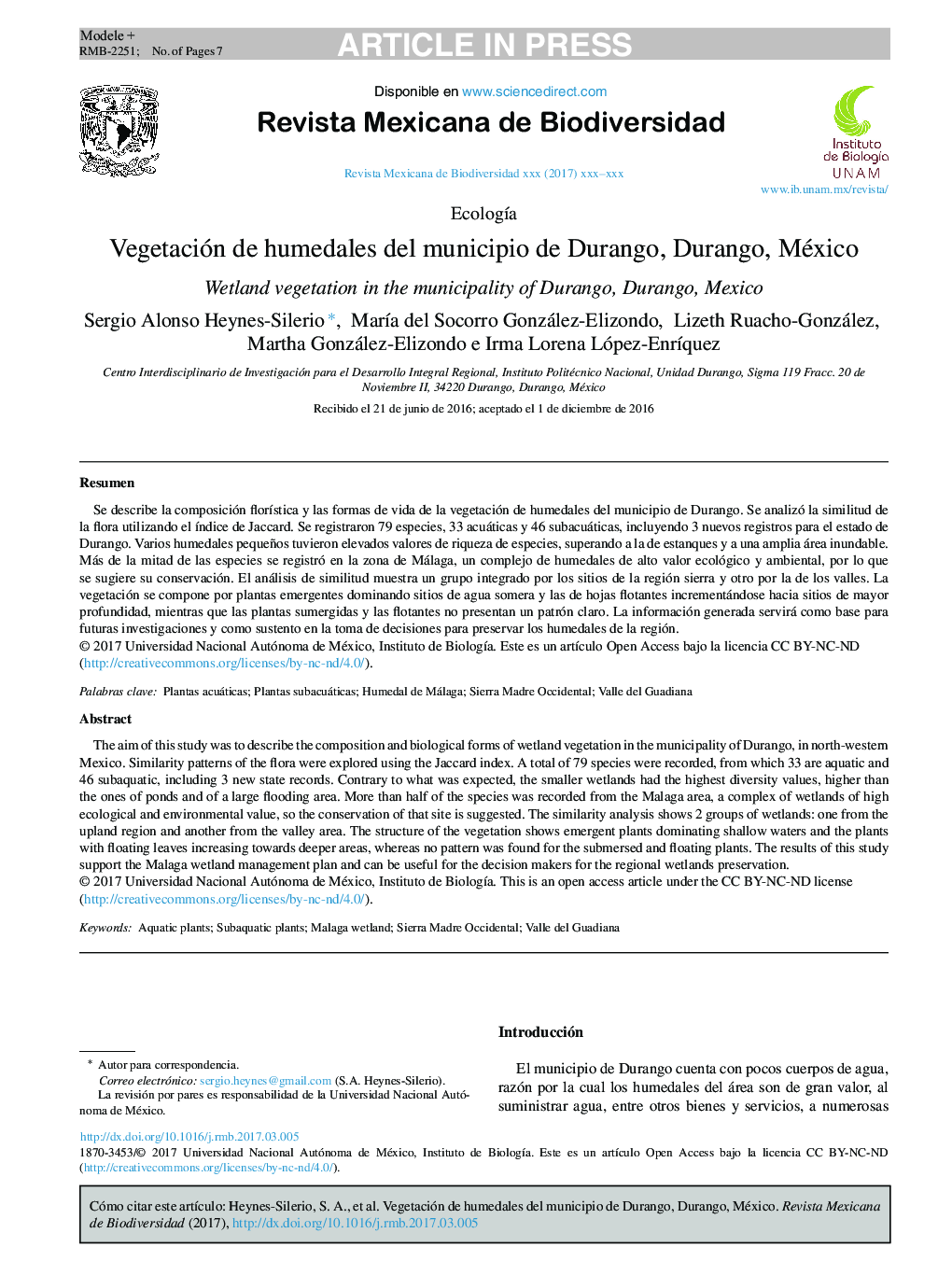| Article ID | Journal | Published Year | Pages | File Type |
|---|---|---|---|---|
| 8867054 | Revista Mexicana de Biodiversidad | 2017 | 7 Pages |
Abstract
The aim of this study was to describe the composition and biological forms of wetland vegetation in the municipality of Durango, in north-western Mexico. Similarity patterns of the flora were explored using the Jaccard index. A total of 79 species were recorded, from which 33 are aquatic and 46 subaquatic, including 3 new state records. Contrary to what was expected, the smaller wetlands had the highest diversity values, higher than the ones of ponds and of a large flooding area. More than half of the species was recorded from the Malaga area, a complex of wetlands of high ecological and environmental value, so the conservation of that site is suggested. The similarity analysis shows 2 groups of wetlands: one from the upland region and another from the valley area. The structure of the vegetation shows emergent plants dominating shallow waters and the plants with floating leaves increasing towards deeper areas, whereas no pattern was found for the submersed and floating plants. The results of this study support the Malaga wetland management plan and can be useful for the decision makers for the regional wetlands preservation.
Related Topics
Life Sciences
Agricultural and Biological Sciences
Animal Science and Zoology
Authors
Sergio Alonso Heynes-Silerio, MarÃa del Socorro González-Elizondo, Lizeth Ruacho-González, Martha González-Elizondo, Irma Lorena López-EnrÃquez,
